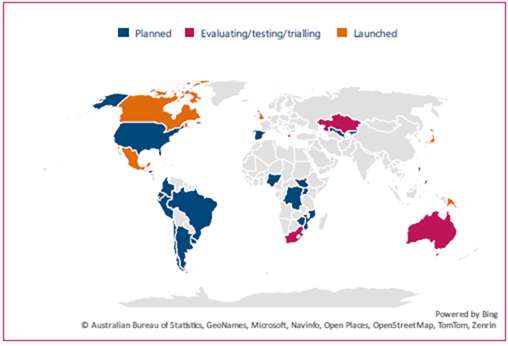Enhance Global Connectivity Through Complementary Services
Terrestrial networks (TNs) are the backbone of modern mobile communication. However, they often fall short in reaching remote, scarcely populated and difficult to access regions due to the high cost associated with infrastructure deployments and maintenance. Non-terrestrial networks (NTNs) bridge these gaps by offering coverage in areas where networks are economically or logistically unfeasible.
As of 2023, approximately 96% of the world's population is covered by mobile networks, yet about 350 million people still reside in areas without any mobile network coverage, predominantly in rural and remote regions. This coverage gap emphasizes the vital role of satellite networks in achieving ubiquitous connectivity.
Filling the Gap
TNs are continuously transforming as providers move forward to modern networks such as 5G. The shift towards 5G enables higher speeds and lower latency, while also better supporting emerging use cases. However, despite the latest advancements, gaps in coverage remain. The significant cost of tower deployment and limited return on investment hinders network expansion to these areas. This underscores the need for complementary non-terrestrial solutions to ensure universal connectivity.
The rapid growth of NTNs can help fill critical connectivity gaps left by terrestrial infrastructure. These networks provide expansive coverage across rural and remote regions where deploying cellular towers is difficult or economically unrealistic.
Advances in Low Earth Orbit (LEO) satellite constellations are enabling low latency connections. As this technology continues to advance, integrating satellite connectivity could extend services to previously inaccessible areas, enhancing global mobility. As a complementary layer to terrestrial systems, NTNs ensure coverage in geographies where traditional infrastructure struggles.
Direct to Satellite IoT Connectivity revenues will exceed 3.7 billion by 2030 and 2.7 billion for Direct to Satellite operator billed. These projections highlight a significant revenue opportunity driven by the growing collaboration between terrestrial and NTN providers.1 Download the Kaleido Forecast.
Coverage by Land, Air, and Sea
NTNs unlock a range of critical use cases by providing reliable connectivity where terrestrial networks may falter. In emergency response scenarios with natural disasters like wildfires or hurricanes, NTNs enable first responders to maintain communication when ground infrastructure is damaged. In the case of IoT, NTNs support the deployment of sensors and connected devices across remote or mobile environments, providing uninterrupted services like monitoring agriculture fields, tracking ships and containers, or managing infrastructure in remote oil and gas operations. NTNs enable seamless connectivity for aviation, supporting navigation, real-time data transmission, and passenger services. These diverse use cases highlight the impact of NTNs as a complement to terrestrial networks.
Many Mobile Network Operators (MNOs) Are Partnering With Satellite Network Operators (SNOs) for NTN Services
Over the past year, partnerships and joint ventures have flourished. Global Mobile Suppliers Association (GSA) announced 101 public partnerships between MNOs and SNOs across 53 countries in a September 2024 report. GSA determined that "62 operators in 45 countries have planned satellite services, 17 operators across 14 countries are testing/trialing, and 12 operators across 12 countries have commercially launched NTN services."2

Closing the Gap
As the demand for reliable, ubiquitous connectivity continues to grow, the integration of TNs and NTNs represent an advancement in modern network infrastructure. TNs are advancing through 5G expansion and the sunsetting of 2G and 3G. But NTNs offer a powerful complement, extending connectivity to underserved regions, enabling critical services during disasters, delivering mission-critical communications in austere environments, and supporting valuable use cases across industries. Together, these networks create an ecosystem capable of meeting the diverse demands of a connected world. As investments continue and technology matures, the complement of these technologies will redefine connectivity.
To learn more about the advancements of NTNs, download our White Paper: Satellite Services Market Overview.
References
-
Sorrell, Steffen. 2023. “Cellular-Satellite Communications: Opportunities & Forecasts.” Data Forecast 2023 – 2028. Kaleido Intelligence. Last accessed July 16, 2025. https://kaleidointelligence.com/pf/cellular-satellite-communications-opportunities-outlook/
-
Global Mobile Suppliers Association (GSA). September 2024. “5G Satellite Connectivity.” Last accessed July 16, 2025. https://gsacom.com/paper/5g-satellite-connectivity-september-2024/




